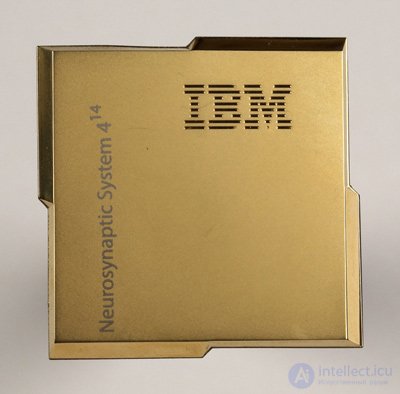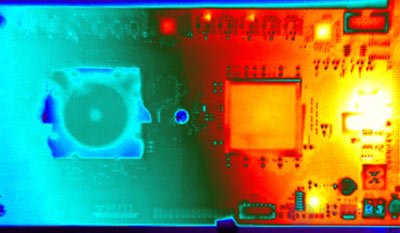Lecture
IBM assembled a chip that simulates the work of 1 million neurons and 256 million interneuron connections.
Most modern computers are based on the von Neumann architecture. In 1945, John von Neumann came up with a scheme for the serial data processing process, which includes an arithmetic logic unit, a data processing unit, a control unit, a memory, and input / output devices. The arithmetic logic unit performs some kind of data operation and proceeds to the next operation, and the faster this cycle is spinning, the more productive the computer will be. The frequency of the transition from command to command is determined by a clock generator that generates electrical impulses of a given frequency.
The von Neumann architecture has one well-known minus, which consists in the fact that both the data and the instruction programs describing what needs to be done with the data are in the same memory. And the processor either collects data from the memory, or manipulates them in accordance with com *** d. At the same time, it is impossible to load new data and process them within the framework of such a scheme. Because of this, modern computers, no matter how fast they are, are difficult to perform certain tasks, for example, related to image recognition.

Trying to go beyond the architecture of von Neumann, experts on "electronic brains" turned to the brains of the present. As you know, the nervous system works due to the colossal number of nerve cells that form contacts with each other - synapses. The same neuron forms connections with many other neurons, takes into account the "opinion" of neighbors when transmitting signals, participates in several neural circuits at once, breaks old synapses, forms new ones, etc., etc. Several billion nerve cells seem to they constantly “breathe”, forming, strengthening, weakening *** and breaking many sets of synapses. Processing the image, the brain works in parallel, that is, different neurons are engaged in different fragments of the picture, instead of sequentially, pixel by pixel, combing it, as the processor does. The same applies to other tasks, not just visual ones.
One of the successful attempts to implement the brain in the gland was made in the IBM research laboratory in the framework of the SyNAPSE ( Systems of Neuromorphic Adaptive Plastic Scalable Electronics ) project. Its essence boils down to creating computational cores from scratch that could imitate the work of the brain. Each of them contains a “synapse” (memory), a “neuron body” (a computing unit), and an “axon” (a communication channel). Working in parallel, a large array of such cores will be able to provide fundamentally new features like instant recognition of complex images, detection of connections between objects, prediction of events, etc.

If the task is described very roughly and with a large number of approximations and assumptions, then its essence is to create an ultra-multi-core processor in which each core will work as a neuron. In an article in Science, Dharmendra Modha ( Dharmendra S. Modha ) and his colleagues describe a TrueNorth chip consisting of 4,000 cores, each of which has 256 input channels and 256 information output channels. Moreover, the electrical signal leaves the nucleus only if it exceeds a certain threshold value - just as it happens in living neurons. In total, 5.4 billion transistors were used to manufacture the chip, which together imitate 1 million nerve cells and 256 million intercellular connections. According to the authors, the connections of the nuclei inside the chip imitate the neural circuits of the brain. A computer with such a chip, for example, quickly and correctly distinguishes from a photo just a person from a person on a bicycle, and a car from other vehicles. The brain-like chip was not only more efficient than standard processors, but also heated less during operation.
In the future, designers are going to continue to fill their processor with transistors to make it even more like the brain - we recall that at this stage it simulates the work of 1 million neurons, whereas in the brain there are about 100 billion. By the way, attempts were made to simulate the work of brain using traditional IC technology, and the most ambitious of these attempts reproduced 1.6 billion neurons and 8.87 trillion synapses, which corresponds to the cat's brain cortex. For this, you need the Blue Gene / P Dawn supercomputer, which has 147,456 processors and 144 TB of main memory. In other words, for the time being, even the most powerful computing complexes in the world cannot reproduce the potential that nature has laid in us. But perhaps with the advent of "neural processors" the situation will begin to change.
Comments
To leave a comment
Digital devices. Microprocessors and microcontrollers. computer operating principles
Terms: Digital devices. Microprocessors and microcontrollers. computer operating principles